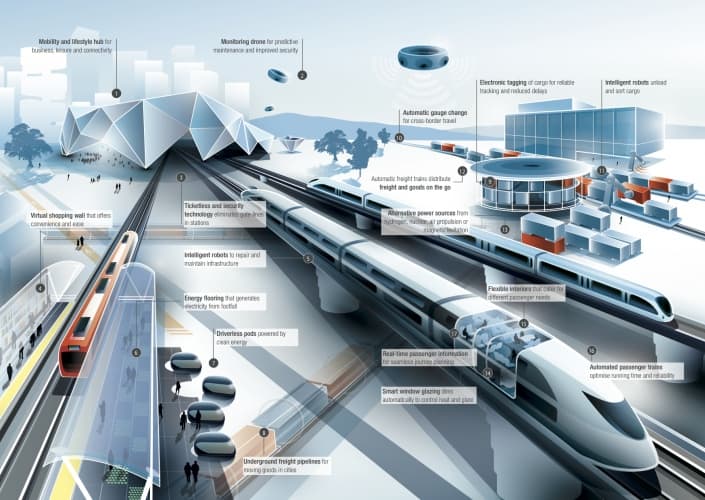From greater reliability to faster inter-city connections, most of us can probably think of ways in which the UK’s rail network could be improved.
As a regular commuter, I’d settle for a season ticket that costs less than a small island, doors that open when they’re supposed to, and ticket inspectors that don’t behave like members of a shabby paramilitary group.
But in its “Future of rail 2050” report - which was published earlier this week - engineering consultancy Arup goes several steps further and sketches out a vision of the future where autonomous trains, unmanned flying maintainance drones, ticketless travel and a host of other advanced technologies usher in a new golden age of rail.
On the surface, the report - which you can read in full here – might sound a little far-fetched.
But whilst it may be mildly reminiscent of those1950s visions of the future that predicted we’d all now be living on the moon and driving around in flying cars, it’s underpinned by real projects and real technologies.

For instance, driverless trains are already used in a number of cities, high speed rail networks are springing up all over the world and, intriguingly, Dutch railway company ProRail is already using drones to check the switch point heating systems on its tracks. And there are many more examples of disruptive rail technologies that are already beginning to make their mark.
More importantly though, the report has been prompted by a realisation that our transport infrastructure must evolve rapidly if it’s going to be able to cope with a host of increasingly pressing demographic and environmental pressures.
From the impact of climate change to the rapid growth of urbanisation - and the challenges posed by an ageing global population - the world is changing fast. And the kind of piecemeal evolution that has characterised the development of our rail network isn’t going to get us there.
Ultimately, Arup’s vision of the future of the future is a compelling one, and although its debatable whether rail transport will look anything like this in 2050, it does at least start an important debate about how a traditionally conservative, slow moving industry should be planning for a future that’s bearing down on us fast.




Red Bull makes hydrogen fuel cell play with AVL
Formula 1 is an anachronistic anomaly where its only cutting edge is in engine development. The rules prohibit any real innovation and there would be...